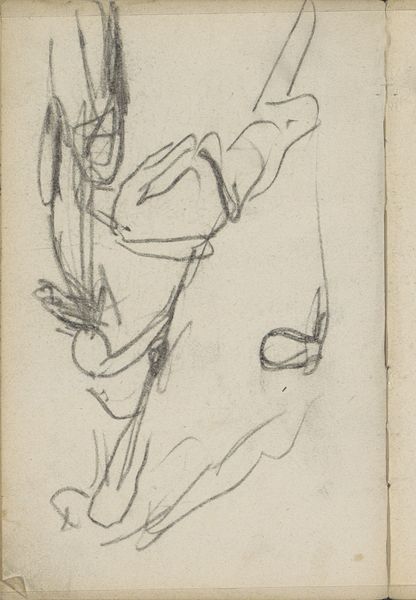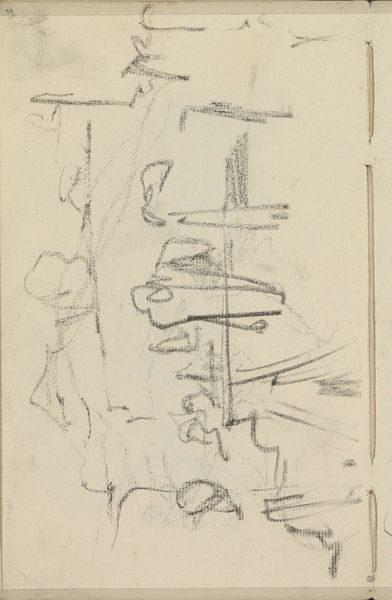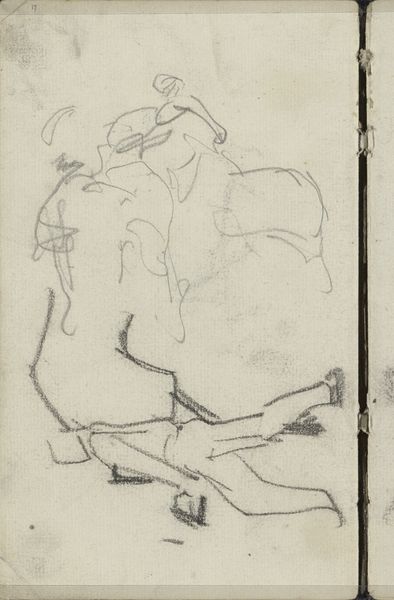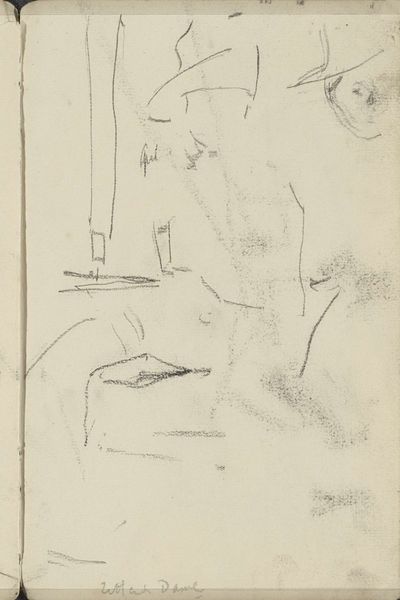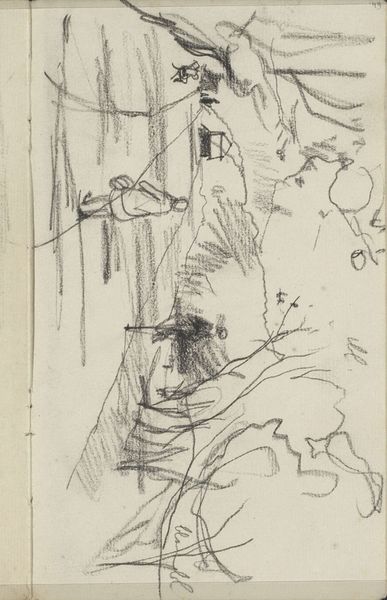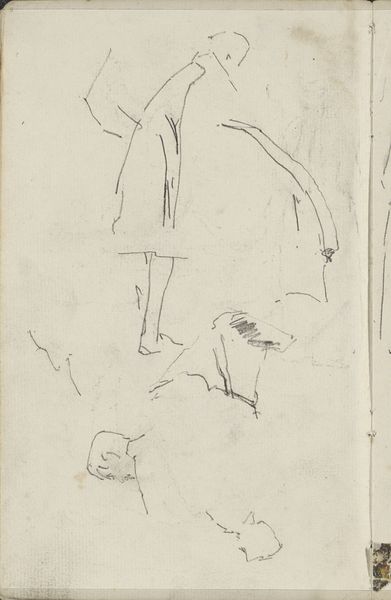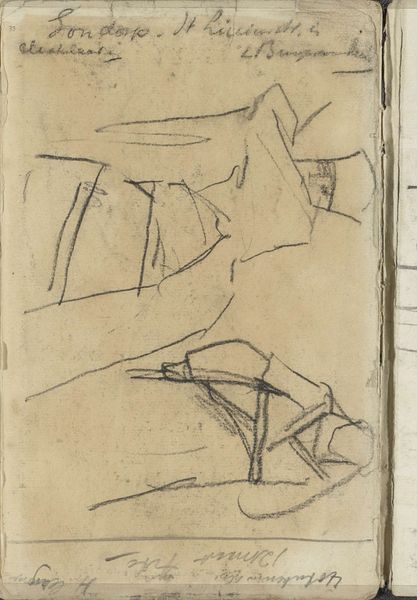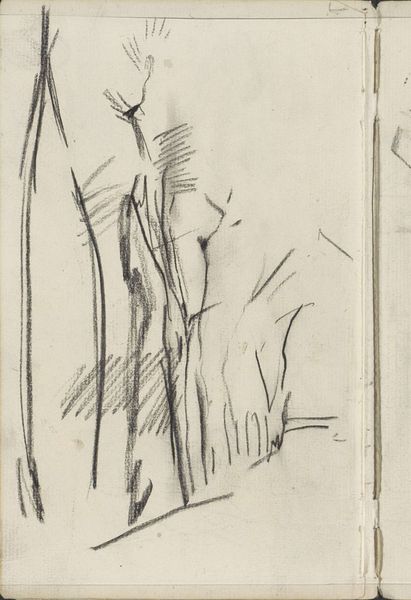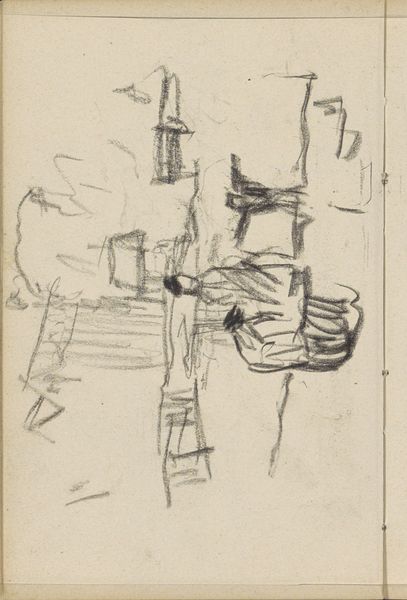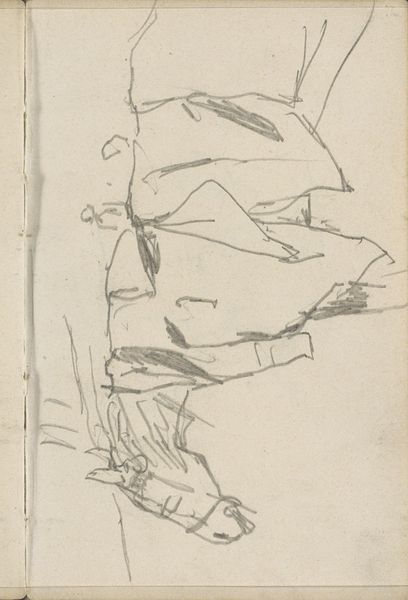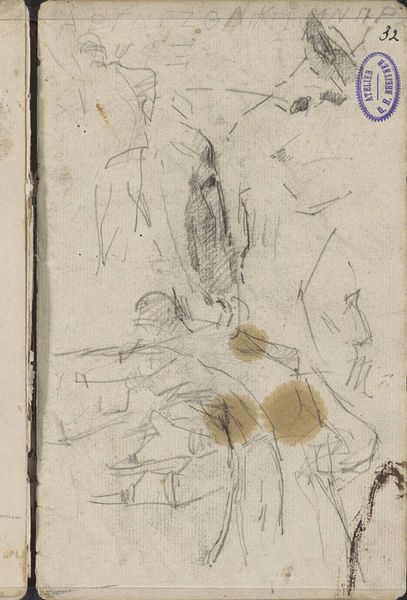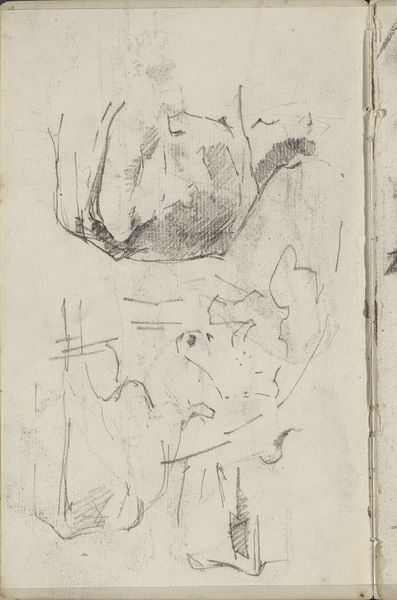
drawing, paper, pencil
portrait
drawing
mother
impressionism
figuration
paper
pencil
horse
Copyright: Rijks Museum: Open Domain
Curator: This is George Hendrik Breitner’s "Paardenhoofd en een vrouw met kind," created between 1884 and 1886. It's currently held in the Rijksmuseum's collection. Editor: It's an intriguing composition! Quite stark in its simplicity, almost ghostly with the pencil on paper. There is something really immediate in the sketch-like quality of the strokes and forms, particularly in the representation of the horse's head and mother with child. Curator: It certainly captures the impressionistic style Breitner was known for. Think about the social context; urban life in Amsterdam was undergoing dramatic change with industrialization. Breitner found beauty and pathos in everyday scenes and figures, from working-class individuals to horses employed in the city. He even earned the nickname ‘painter of the people.’ Editor: And his materials reflect that too – humble pencil and paper, accessible means of recording these observations. Did he produce drawings like this often? It's not quite a study but is it exactly finished? Curator: Exactly. Breitner actually photographed subjects first, which became crucial source material. It's also thought the quickness of drawing let him grasp ephemeral moments that his subjects did not sit for. He would take this source material back to his studio and use it to craft more elaborate paintings of these images, but the sketches show a sort of creative processing to capture everyday urban life and its constant movement. Editor: That ties in so well with Impressionism, a response to rapid social change through subjective impressions. This work feels quite unique in how directly it communicates the feeling of capturing an unposed moment, outside, in the public sphere. It's also striking to see this work and how it focuses not on elites but common workers of society at that moment. There is a real value of placing that type of subject front and center here. Curator: And it's powerful precisely because it is fleeting. What do you make of the incompleteness? There's a rawness, almost like peeking into Breitner's personal process. Editor: I see it as a conscious rejection of academic art's formal polish. By embracing immediacy and focusing on accessible subjects and methods, Breitner democratizes both art and his subjects. Curator: It's clear, considering this pencil sketch, how social, cultural, and material histories blend. His subjects weren’t merely aesthetic studies, but commentaries on labor and industrializing society at that moment in time. Editor: The politics of the sketch elevate this fleeting moment into something deeply human, showing our shared experience. Curator: A poignant note to end on, seeing this moment caught with such immediate simplicity.
Comments
No comments
Be the first to comment and join the conversation on the ultimate creative platform.
